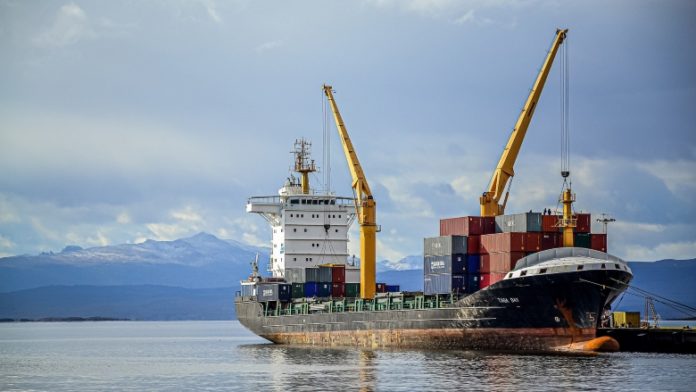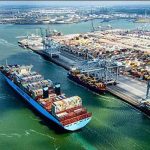Genoa-based Fratelli Cosulich is diversifying its bunker barge fleet to include methanol- and biofuel-ready vessels, and plans to expand its LNG barge fleet further as it gets ready for shipping’s multi-fuel future, its head of marine energy Guido Cardullo told S&P Global Commodity Insights this week.
“We need to sympathize a lot with shipowners and charterers because the regulation is very patchy at the moment and is not always consistent … making the choice of fuel for new builds particularly difficult,” Cardullo said on the sidelines of the SIBCON 2024 conference in Singapore.
“Shipowners are looking into methanol with great interest, although it lags LNG,” Cardullo said.
Fratelli Cosulich is currently building four 7,999-deadweight tonnage IMO type 2 chemical bunkering tankers at Chinese shipyard Taizhou Maple Leaf Shipbuilding, capable of delivering methanol and biofuels consisting of up to 100% bio component, or B100, Cardullo said.
Deadweight tonnage is a measurement of the total contents of a ship including cargo, fuel, crew, passengers, food and ballast water.
The company plans to have five methanol- and biofuel-ready bunker barges in the near term, he said.
“Of the five, one of them — Marta Cosulich — is already operating in Singapore and the second, in partnership with TFG Marine — Maya Cosulich — is expected to be delivered by December 2025. The remainder three are scheduled for delivery in 2026,” he said.
Ammonia is another attractive fuel because it does not have carbon in its molecule and so does not produce CO2 during combustion, Cardullo said.
“Our view is that by 2027-2028, there will be availability of green ammonia molecules. Then our job will be to facilitate the delivery of these molecules to ocean-going ships,” he said.
Fratelli Cosulich has assessed the design phase of an ammonia bunker vessel and is looking to order one such vessel by the second half of next year, he added.
In terms of operational expansion, last year was a pivot year, Cardullo said.
In the past, Fratelli Cosulich had physical operations only in Singapore and Genoa. “In the last 12 months, we have started physical bunker supply operations in ARA, Malaysia, and in Oman with a traditional banker vessel and in partnership with TFG Marine,” he added.
“Now, we are also evaluating projects in the Med where we want to become an asset provider,” he added.
LNG barge fleet expansion
The company also plans to expand its LNG barge fleet.
According to Cardullo, “pressing rules” such as the EU’s Emissions Trading System and the impending FuelEU Maritime allow shipowners to use LNG with some confidence.
“A ship that can burn LNG as marine fuel will, depending on the type of engine utilized, be able to be compliant with these EU rules until 2035 roughly, and can still stay compliant beyond that by adding some bio-LNG,” Cardullo said.
He estimated global demand for LNG as a marine fuel could potentially hit 10 million metric tons/year before 2030 from the current level of roughly 3 MMt-4 MMt/year as its numerous environmental benefits and expectations of softening LNG prices in the coming years on ample supply propel its use.
Fratelli Cosulich is already an active supplier of LNG with its LNG bunker vessels, Cardullo said.
The company’s twin small-scale LNG bunker vessels — Alice Cosulich and Paolina Cosulich — are fully operational, with the first one serving Amsterdam-Rotterdam-Antwerp, or ARA, and the second one chartered to Malaysia’s Petronas. Both LBVs have a bunkering capacity of 8,200 cubic meters for LNG.
The company is considering investing in a third LNG bunker vessel with a capacity of about 18,000-20,000 cubic meters, Cardullo continued.
Level playing field
The International Maritime Organization, in a statement Oct. 8, said that at the conclusion of the MEPC 82, member states had identified further areas of convergence in their positions. They produced a draft legal text to use as a basis for ongoing talks around the proposed “mid-term measures” for GHG reduction, which are expected to be adopted in 2025, it added.
The 83rd session of the IMO’s Marine Environment Protection Committee is scheduled from April 7-11, 2025.
“I’m not partial to any regulation but I really hope that the International Maritime Organization in April 2025 comes up with a reasonable and detailed timeframe and deadline to implement a carbon pricing mechanism,” Cardullo said.
He added that the regulations need to provide shipowners a level playing field, incentivize producers to invest in green fuels, and offer an effective comparison between traditional fossil fuels and zero or near-zero alternative fuels to aid shipping’s decarbonization.
Ships have been burning residual fuel oil because it is plentiful, energy-dense and cheap.
“So, the new fuels to be adopted must be put on say, the same level as of fuel oil, and that should consider externalities such as an emissions comparison,” he continued.
“This way, the new fuels can be competitive against traditional fuel,” he added.
Platts, part of Commodity Insights, assessed fuel oil 380 CST 3.5%S FOB Singapore cargo at $443.44/metric ton and Marine Fuel 0.5% FOB Singapore cargo at $577.29/t Oct. 9, while it assessed LNG bunker Singapore at $765.96/t on the same day.
It assessed Singapore methanol-delivered bunker at $403/t, methanol bunker Singapore (oil) at $768.512/t and methanol bunker Singapore (LNG) at $974.698/t Oct. 9.
Source: Platts





